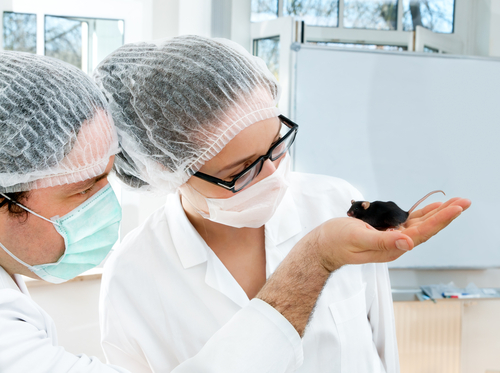DMD Increases Susceptibility to Rare, Aggressive Muscle Cancer, Mouse Study Suggests

Severe Duchenne muscular dystrophy (DMD) is linked to increased susceptibility to a rare and aggressive type of muscle cancer called rhabdomyosarcoma, a mouse study suggests.
The finding was reported by researchers from Sanford Burnham Prebys Medical Discovery Institute in the study, “Muscle Stem Cells Give Rise to Rhabdomyosarcomas in a Severe Mouse Model of Duchenne Muscular Dystrophy,” published in Cell Reports.
Skeletal muscle is a low-turnover tissue sustained by the transformation of muscle stem cells (MuSCs) into mature muscle cells. Turnover of tissues refers to the process of the natural death of old cells and replacement of these by stem cells and new cells.
In adults, MuSCs are mostly in a latent state and become activated in response to injury and promote muscle fiber repair. Given the tissue’s low turnover, skeletal muscle is associated with a low frequency of tumor formation and growth compared to more proliferative tissues.
Rhabdomyosarcoma is a rare soft tissue malignant tumor that can develop throughout life, but it is more frequent in young children.
Join our MD forums: an online community especially for patients with Muscular Atrophy.
Previous studies in mice, as well as four separate clinical reports, have suggested an association between DMD and an increased susceptibility to RMS. However, the underlying mechanism of RMS development in the context of DMD and how disease severity may influence tumor development are not fully understood.
To explore these issues, researchers evaluated the progression of mice models of severe human DMD that were genetically induced to develop tumors.
These mice developed tumors faster than mice that did not have DMD but still had been genetically modified to have tumors, suggesting that the dystrophic (lack of dystrophin) environment supported tumor formation. The majority of the formed tumors were found to have markers consistent with rhabdomyosarcoma diagnosis.
Mice that had a more severe form of DMD developed tumors at a rate comparable to that observed in mice with less severe disease. However, the age of onset of the tumors was significantly accelerated in mice with severe DMD (9 months versus 18 months), indicating that disease severity may be an important contributor for rhabdomyosarcoma development.
Next, the team explored the underlying mechanism that could be involved in this tumor-promoting process.
Detailed analysis of DMD mice’s muscle tissue revealed that these animals had increased numbers of MuSCs, which were associated with an increase in regenerating tissue areas and accelerated muscle turnover. In addition, muscle cells showed signs of accumulated DNA damage and increased genetic instability, which are known contributors for malignant cell transformation.
By isolating MuSCs from the DMD mice, the team could confirm that these cells had reduced ability to transform into mature muscle tissue cells and increased potential to drive tumor formation. This was mainly due to a selective pressure promoted by the disease-associated muscle injury environment over MuSCs.
Researchers also found that two pro-inflammatory genes, Ccl11 and Rgs5, were involved in tumor growth. By turning off the corresponding proteins’ production, tumor growth was reduced.
Therefore, modulation of the cellular signals that drive these processes could be a potential strategy to prevent the development of rhabdomyosarcoma in DMD.
“Scientists, including our team, are interested in harnessing muscle stem cells’ inherent power to generate new muscle tissue to treat DMD. Thus, understanding the cell’s behavior during disease is important so we know how to use the cells most effectively,” Alessandra Sacco, PhD, associate professor in the Development, Aging and Regeneration Program at SBP, and senior author of the study, said in a news release.
“In addition to deepening our understanding of how this cancer may occur in DMD, our findings highlight the importance of careful assessment of muscle stem cells’ health when developing potential DMD treatments,” she said.
The research team is planning further studies to explore the molecular mechanisms involved in the process of tumor growth in DMD. These studies may help identify new targets that “could lead to treatments for rhabdomyosarcoma in DMD,” Sacco said.






